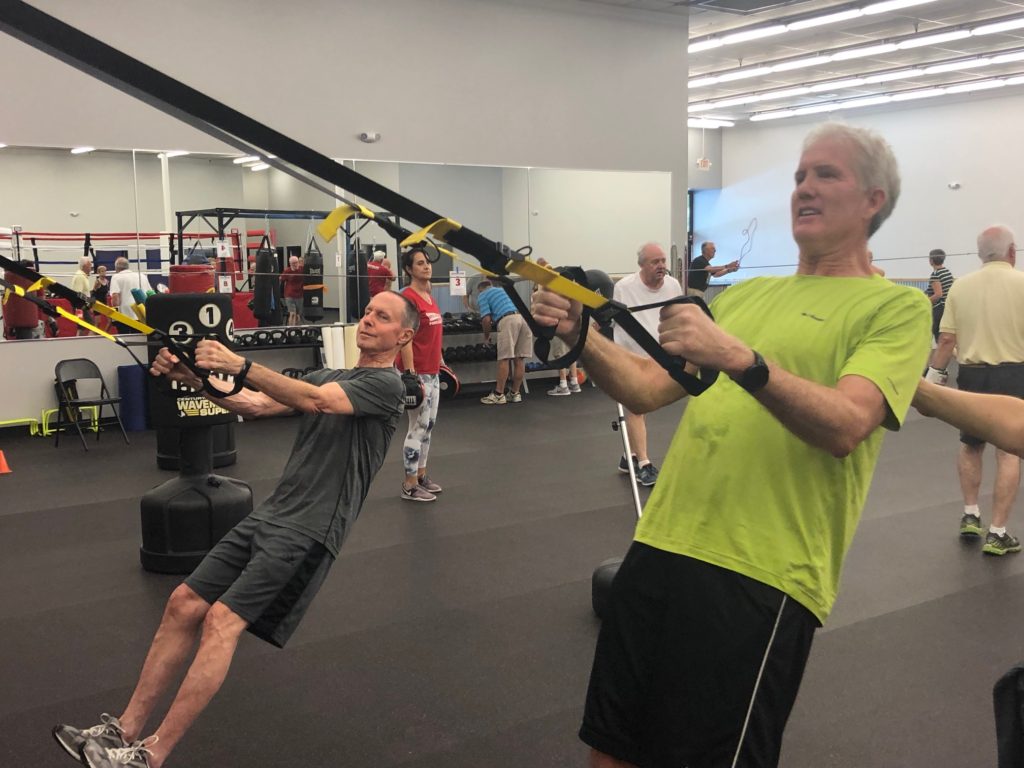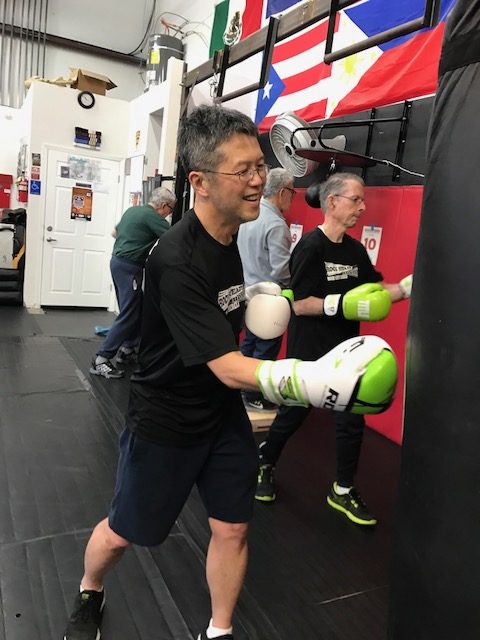
My fighters and dancers often comment on how good they feel after our classes, and their family members notice that their mood is so much better on the days they attend. This isn’t true just for people with Parkinson’s, but with all of our group classes! It’s a fact, people who work out together are getting more bang for their buck.
Why? Because they are getting the physical benefit of the exercise for their bodies AND a psychological boost for their brain!
It breaks my heart to hear someone with PD say, “I’m getting plenty of exercise. I lift weights, ride my indoor/outdoor bike, and I walk every day.”
Do you hear what I hear?? “I have PD. I am choosing to go it alone, and hope what I am doing is right”.
If you are working out in your home gym or just walking because those options are cheaper than going to a Parkinson’s group exercise class, you are choosing an expensive, high-risk way to exercise. Those are good options when you are traveling or on your days off from class (we’ll call it homework), but we highly recommend joining a class with professional instruction as your primary routine.

Here’s why:
- If you choose to work out alone while walking or lifting weights in a gym, you’ll get the physical stimulation, but there are other elements of the brain which are not benefiting.
- If you only work out alone, how do you know if you have proper form with your exercises? You could be doing damage to your joints or making your posture worse. At the very least, you may not be pushing yourself and just wasting your time.
- Did you know there are certain exercises which are contraindicated for people with PD? Some happen to be the most common exercises taught in popular exercise classes. They can cause injuries, make you tighter, and put you at a high risk for falls.

Exercising with a group of people who know what you are going through is one of the best anti-depression, anti-anxiety drugs out there! The greatest side-effect is that you may have too much fun!
- Being in a Parkinson’s specific class with PD trained coaches ensures that you will have a second pair of eyes on you. You’ll be lovingly pushed, going well beyond what you would do on your own. I see many people with PD in gyms moving really slow. They are unaware they are not working full range of their joints, and are actually making their bodies stiffer.
- Working out in a group adds an element of accountability. People show up regularly and are less likely to drop out.
- According to a study published in The Journal of the American Osteopathic Association, working out in a group lowers stress and significantly improves quality of life, while those who exercised alone experienced no significant changes in their stress level and a limited improvement to quality of life.
- The communal benefits of coming together with friends while encouraging one another pays dividends beyond exercising alone. It’s like money in the bank!

Getting people who are depressed to start exercising can be difficult. Several people who reached out wanted to start, but couldn’t make that first step. If only they knew being around people who are working hard tends to break people out of a depressive cycle.
If you know someone who is only working out alone because it is “easier” and/or “cheaper”, please remind them that their choice could be more expensive in the long run. They may eventually have to take a prescription drug to help them with emotional and physical issues that could have been met by just showing up and having fun!
Go forth and conquer!
Coach Kimberly
RESOURCES:
J Sports Med Phys Fitness. 1995 Sep;35(3):206-13. Twelve-month adherence of adults who joined a fitness program with a spouse vs without a spouse. Wallace JP1, Raglin JS, Jastremski CA.
Dayna M. Yorks, Christopher A. Frothingham, Mark D. Schuenke. Effects of Group Fitness Classes on Stress and Quality of Life of Medical Students. The Journal of the American Osteopathic Association, 2017; 117 (11): e17 DOI: 10.7556/jaoa.2017.140
